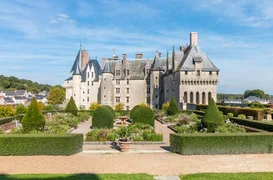Notre-Dame cathedral

The best of Notre-Dame cathedral
Bucket-list experiences
Make it a getaway
More to explore
Nearby places to go
FAQs about Notre-Dame cathedral
When is the best time to visit Notre Dame Cathedral in Rouen?
How can I get to Notre Dame Cathedral in Rouen from Paris?
What should I check before visiting Notre Dame Cathedral in Rouen?
What are some travel tips for visiting Notre Dame Cathedral in Rouen?
What local dishes should I try when visiting Rouen?
What to know before visiting Notre-Dame cathedral
Remarkable Landmarks and Must-Visit Sights
West Front
The west front of Rouen Cathedral is a stunning example of Gothic architecture, featuring three intricately decorated portals and a wealth of sculptural details. The central portal, dedicated to the Virgin Mary, showcases a Tree of Jesse, while the side portals depict scenes from the lives of Saint John the Evangelist and Saint Stephen.
Saint-Romain Tower
Begun in 1145, the Saint-Romain Tower is a remarkable blend of early Gothic and later decorative elements. It houses the cathedral's largest bell, Joan of Arc, and the second-largest carillon in France.
Butter Tower
Constructed between 1488 and 1506, the Butter Tower is a late Gothic marvel named after the donations made by those who received dispensation to consume butter during Lent. Its dense decoration and octagonal crown make it a standout feature.
Cultural and Historical Significance
Rouen Cathedral has played a pivotal role in the region's history, from its consecration in 1063 in the presence of William the Conqueror to its survival through Viking raids, fires, and wars. It has also inspired artists like Claude Monet, who captured its beauty in a series of impressionist paintings.
Local Cuisine
While visiting Rouen, indulge in the local cuisine that Normandy is famous for. Try dishes like duck à la rouennaise, a rich preparation with a unique sauce, or enjoy a selection of cheeses such as Camembert and Neufchâtel. Pair your meal with a glass of local cider or Calvados for a true taste of the region.
Historical Significance
The cathedral first began construction in the 12th century; its foundations are a basilica from the 4th century and a Romanesque cathedral from the 11th century. It experienced hardships including a fire in 1200, damage by the Calvinists during the French Wars of Religion in the 16th century, and bombings during the Second World War. It held the title of the tallest building in the world from 1876 to 1880 and is still considered the tallest cathedral in France.
Art and Music Influence
The cathedral influenced artists like Camille Pissarro and Claude Monet, who captured it in their works. Monet painted it more than 30 times in varying light and weather. The cathedral also has a rich musical history, especially with regards to the organ. Baroque musician Jean Titelouze, known as the 'father of the French organ school,' worked here from 1588 until his death in 1633.
Tombs and Memorials
The cathedral houses the tombs of many Dukes of Normandy, including the heart of Richard the Lionheart. There is also a plaque commemorating the former crypt of the Duke of Bedford, John Plantagenet, one of the main overseers in the trial of Joan of Arc.



